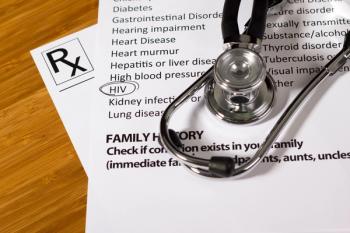
Pharmacists brace for tamper-resistant prescription rule
The Centers for Medicare and Medicaid Services moves fowarded with implementing new tamper-restantant prescription pad rules.
Just days before the Medicaid tamper-resistant prescription pad rule was set to go into effect, a flurry of activity is promising to give healthcare providers a reprieve. In late September, both the Senate and House of Representatives passed bills to delay the rule's implementation for six months. The rule mandates that all nonelectronic Medicaid Rxs be written on tamper-resistant Rx pads to discourage fraud. At press time, the bill had not yet been signed by President Bush. Still, even with an extra six months to prepare, pharmacists and doctors around the country are just beginning to learn what the rule's impact will be.
According to an August guidance sent to state Medicaid directors by the Centers for Medicare & Medicaid Services, to be considered tamper-resistant, an Rx pad must contain features in at least one of the following categories:
1. Eliminating unauthorized copying of prescriptions
3. Inhibiting the use of counterfeit prescriptions
By Oct. 1, 2008, Rx pads will still need to have all three types of tamper-resistant features. Physicians can bypass the requirement by sending electronic, computer-faxed, or verbal Rx orders. Pharmacists getting a verbal confirmation of an Rx would also meet the criteria.
The concern of pharmacy and physician groups has never been about the availability and feasibility of the technologies, or the importance of reducing prescription fraud, rather it has been the speed of the implementation. The new rule was a little-noticed provision of the supplemental Iraq spending bill passed in April, and CMS did not clarify what would constitute a tamper-resistant Rx pad until less than two months before the implementation. "It took states like New York 18 months to implement such programs," John A. Gans, APhA executive VP/CEO, pointed out earlier this summer. "And-in almost all of these states-the tamper-resistant requirement was limited to a much smaller group of medications."
Quick to capitalize on the new requirement, several Rx-pad printers are already advertising their compliance with the Medicaid rule. Many firms offer a variety of security features, ranging from heat-sensitive sheets that change color when touched to hidden words that appear when the Rx is photocopied. Other features might include a blue or green background ink on the Rx blank that resists reproduction, thermochromic ink that disappears or shows obvious tampering if the Rx pad is rubbed, chemical void protection that prevents alteration by chemical washing, and a watermark on the back of the prescription blank that can be seen only at a 45-degree angle.
While many R.Ph.s and doctors are getting their first exposure to tamper-resistant Rx pads, a few states have already adopted them for controlled-substance or state Medicaid Rxs. Tamper-resistant pads were required in California beginning in 2005 for controlled substances, and in New York all Rxs must be written on secure pads. "It's easy to spot the prescription forms," commented James DeTura, president of the New York City Pharmacists Society.
Still, as DeTura pointed out, the new rule poses a significant problem for Medicaid beneficiaries. Although the state law has been in effect since April 2006, New York has issued many exemptions to hospitals and clinics-where Medicaid patients are most likely to visit for prescriptions-allowing them to use prescription pads that do not meet the CMS standards. "A lot of the practitioners don't know about this," DeTura said.
Pharmacists can try to get a voice confirmation for noncompliant prescriptions, but DeTura believes, "They are going to be swamped and I don't think they'll be able to meet the demand, so Medicaid recipients are going to end up suffering for it."
Questions anyone?
Expecting more than a few questions, the Centers for Medicare & Medicaid Services issued a set of answers to potential questions about the tamper-resistant pad rules. While the full FAQs can be found at the CMS Web site, here are some answers to a few important questions:
Q: Can the pharmacy provide the full prescription to a patient for an emergency fill or only a 72-hour supply?
A: Yes, so long as the pharmacy obtains a compliant prescription within 72 hours.
Newsletter
Pharmacy practice is always changing. Stay ahead of the curve with the Drug Topics newsletter and get the latest drug information, industry trends, and patient care tips.

















































































































